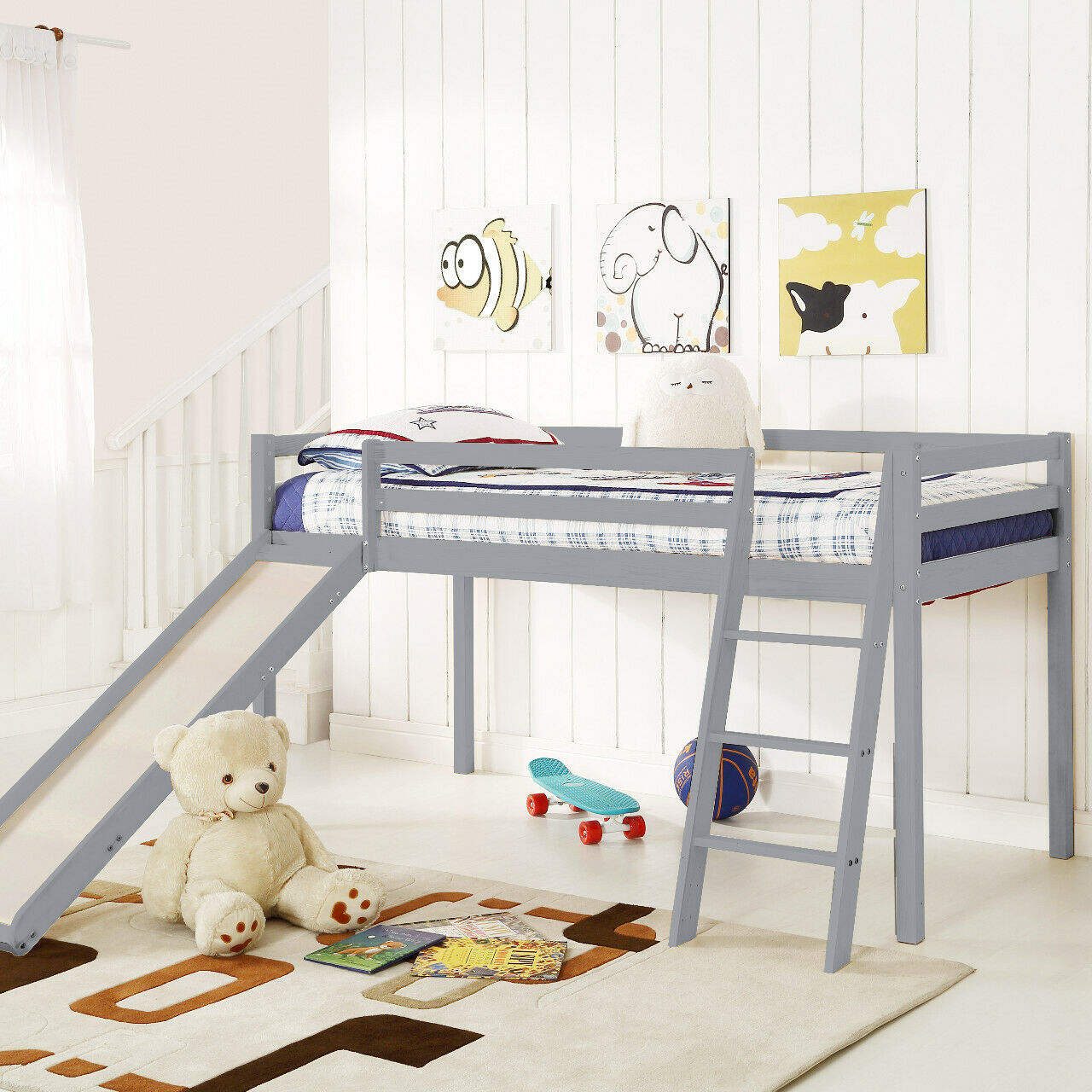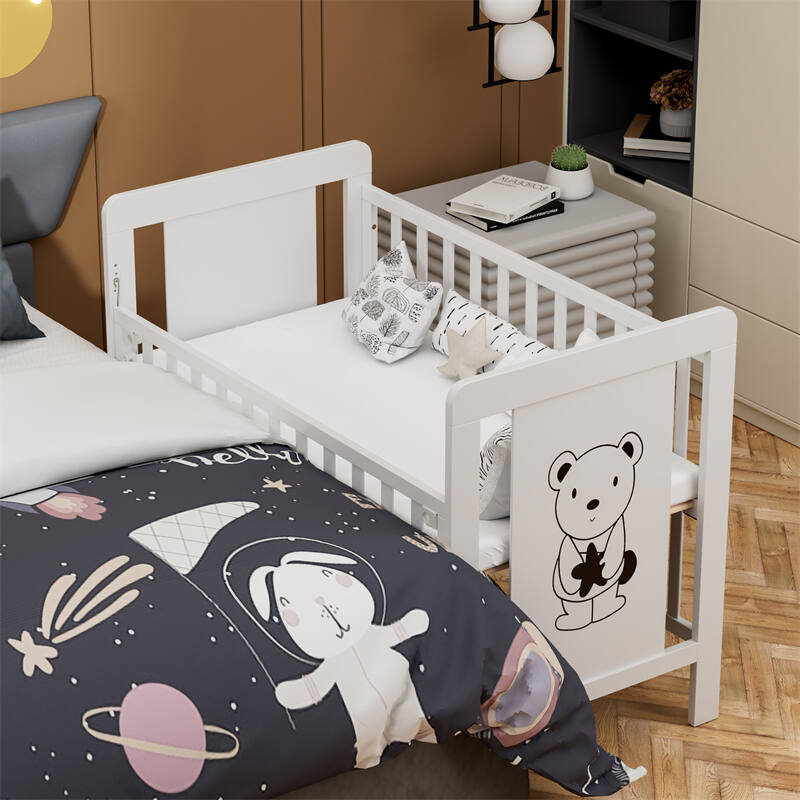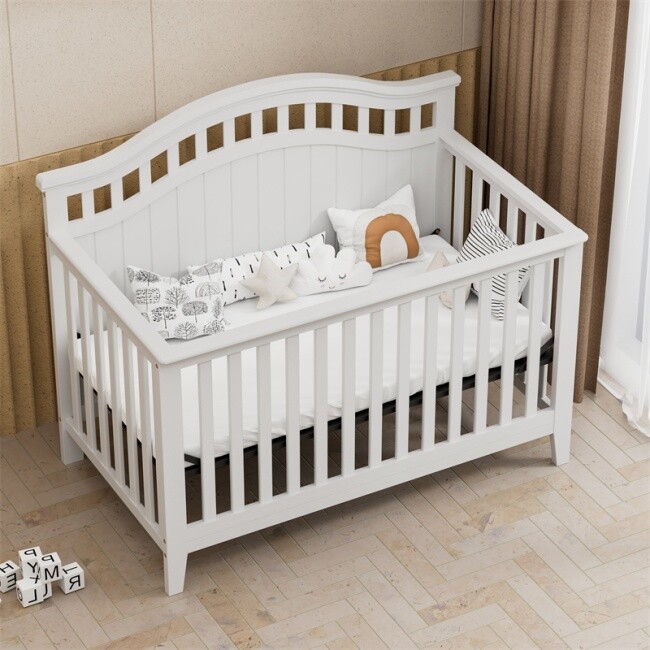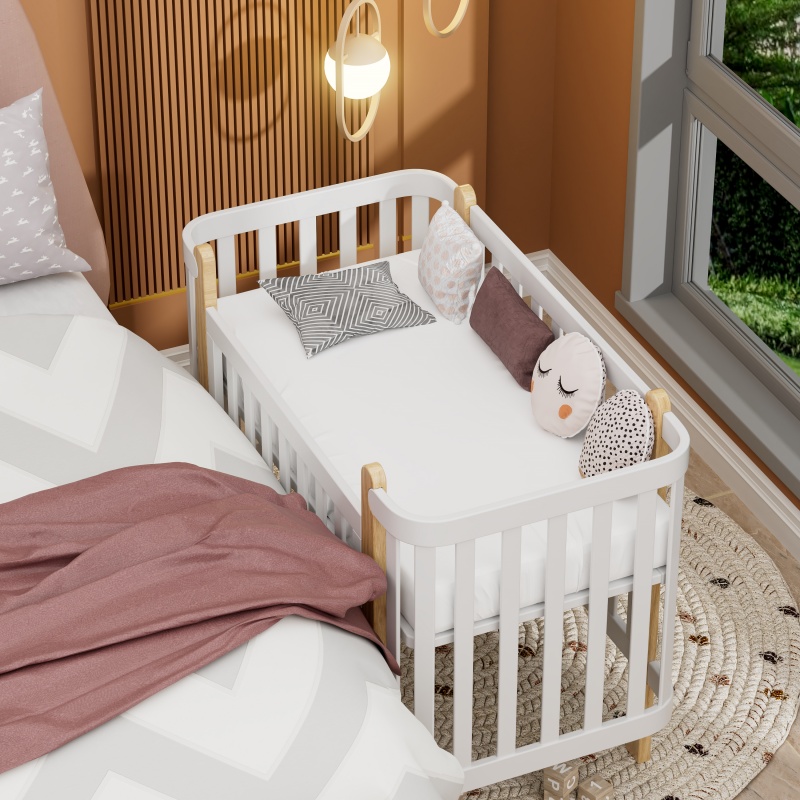In an era where living spaces are getting smaller, the need for innovative furniture solutions has never been more critical. Loft beds, with their unique ability to free up floor space, have emerged as a popular choice for those living in confined quarters. This comprehensive guide explores how loft beds can transform small rooms into functional, spacious areas, ensuring every square foot is utilized efficiently.
Does a Loft Bed Save Space?
Many real-life cases show that using a loft bed can save space in your house. Countless people who dare to innovate and try have experienced the space optimization capabilities it brings.
The design of high beds caters to the necessity of space conservation in confined living quarters. Unlike traditional beds which dominate the floor area, loft beds create an overhead sleeping platform, essentially doubling the usable space within the same square footage.
In the same vertical space, you not only get a bed in which to sleep comfortably, but you may also have a study area, storage room, or a comfortable resting nook.
Do Loft Beds Make a Room Look Bigger?
Yes, loft beds do that
If the space in your room is not large, adding more furniture or items will make it appear narrow, crowded, and chaotic. This visual effect may make people feel annoyed and depressed.
The illusion of spaciousness is a coveted attribute in interior design, especially when dealing with limited square footage. Loft beds play a pivotal role in achieving this effect, as they alter the room’s vertical dynamics and draw the eye upward. This upward shift in visual perspective makes the ceilings seem higher than they are, creating an airier feel to the room. When the bed is raised off the floor, it also allows for more light to permeate the space, further enhancing the sense of openness. A loft bed can create a focal point that accentuates the room’s height rather than its limitations.
Furthermore, the strategic placement of furniture and accessories in the loft bed can enhance the room’s perceived size. For instance, placing a rug under the loft bed or using color contrasts can define different areas within the room, making it seem larger and more organized.
What Are the Common Loft Bed Dimensions?
Twin Loft Bed
Size: Measures approximately 39 inches wide and 75 inches long (99 cm x 190 cm).
Sleeping Space: Provides sleeping space for one person.
Intended Use: Commonly used in children’s rooms, dormitories, or small living spaces where maximizing floor space is essential.
Full Size Loft Bed
Size: Measures around 54 inches wide and 75 inches long (137 cm x 190 cm).
Sleeping Space: Offers a larger sleeping area suitable for one person but with more room to stretch out.
Intended Use: Suitable for teenagers, college students, or adults who require more space while sleeping.
Queen Loft Bed
Size: Typically measures about 60 inches wide and 80 inches long (152 cm x 203 cm).
Sleeping Space: Provides sleeping space for two people, ideal for couples or individuals who prefer a larger bed.
Intended Use: Suitable for individuals and couples who like extra large sleeping space
Twin XL Loft Bed
Size: Measures roughly 39 inches wide and 80 inches long (99 cm x 203 cm).
Sleeping Space: Offers a longer sleeping area compared to the twin size, suitable for taller individuals or those who prefer extra legroom.
Intended Use: Designed for taller individuals or those who prefer extra length in their sleeping area.
Custom Loft Bed Size
Many loft bed manufacturers support custom sizes and styles to meet different needs. Before customizing, the room needs to be measured, Consider any obstacles or architectural features that may affect the placement or size of the loft bed, such as windows, doors, or sloped ceilings.
What Is the Best Height for a Loft Bed?
A general guideline is to maintain at least 33 to 36 inches of clearance between the mattress and the ceiling, ensuring adequate space for sitting up in bed without the risk of hitting one’s head.
For rooms with standard ceiling heights of about 8 feet, a loft bed height of 5 to 6 feet allows for comfortable use of the space underneath, whether it’s for a study area, seating, or storage. However, for rooms with higher ceilings, the bed can be elevated further to maximize the utility of the vertical space, provided that safety rails are adequately high to prevent falls.
Children and shorter adults may require a loft bed that’s lower to the ground to facilitate safer and easier access. Conversely, taller individuals will need enough clearance above the bed to sit up comfortably without any constraints.
How to Use a Loft Bed in a Room with a Low Ceiling?
The high sleeper bed raises the bed to a certain height. Although it reduces the floor space, it requires more vertical space. If you have a room with low ceilings but would like to use it, here are some simple solutions:
Choose a Low-Profile Loft Bed
- Look for loft bed designs with a lower overall height to minimize the distance between the bed frame and the ceiling.
- Opt for a platform-style loft bed or a design with a lower mattress height to reduce the overall height of the bed structure.
Customize the Loft Bed Design
- Explore customizable loft bed designs that can be adapted to fit the specific dimensions and constraints of a room with a low ceiling.
- Work with a furniture manufacturer or carpenter to create a custom loft bed that meets your space requirements.
Optimize Under-Bed Space
Focus on maximizing the space underneath the loft bed since there may be limited vertical clearance above. Use the space under the bed for storage, seating, or other functional purposes such as a study area or a cozy reading nook.
Create an Illusion of Height
Use design techniques to create the illusion of height and space in the room despite the low ceiling. Paint the walls and ceiling in light colors to make the room feel brighter and more expansive. Hang curtains or drapes from ceiling height to draw the eye upward and create a sense of verticality.
Keep the Room Clutter-Free
- Minimize clutter and unnecessary furnishings in the room to create a more open and airy feel.
- Choose multi-functional furniture pieces that serve multiple purposes to maximize space efficiency in a small room.
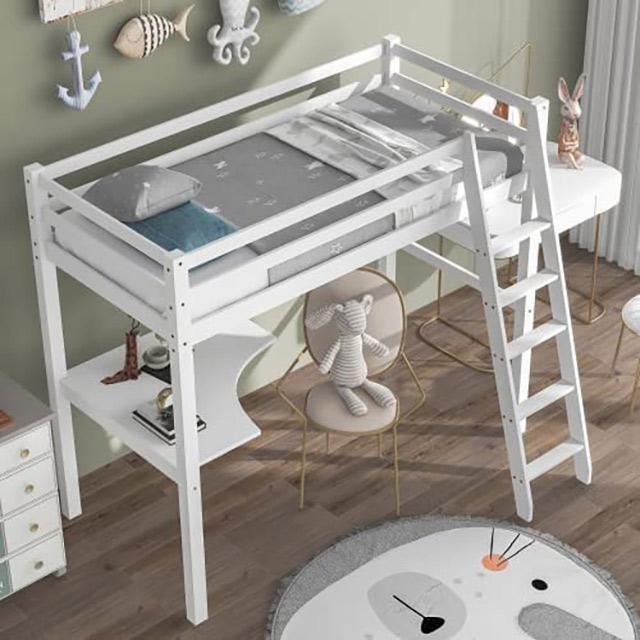
Factors to Consider When Choosing a Space-Saving Loft Bed
Room Size and Layout: Assess the dimensions and layout of the room where the loft bed will be placed. Consider factors such as ceiling height, floor space, and any architectural features or obstacles that may impact the placement or size of the loft bed.
Intended Use of Space Underneath: Determine how you plan to utilize the space underneath the loft bed. Common options include creating a study area, seating area, storage space, or a combination of these. Ensure that there is sufficient clearance height and floor space underneath to accommodate your intended activities or furnishings.
Sleeping Arrangements: Consider how many people your bed is intended to sleep and how much space you want in the bed while sleeping. Opt for a loft bed height that provides comfortable sleeping space while allowing for easy access and sufficient headroom.
Safety Features: Look for features such as sturdy construction, guardrails, and secure ladders or staircases. Ensure that the loft bed meets safety standards and guidelines for structural integrity and weight capacity.
Versatility and Customization: Consider features such as built-in storage, adjustable components, or convertible designs that maximize functionality and adaptability in small spaces.
Types of Space-Saving Loft Beds
Low Ceiling Loft Beds
These beds typically have a lower overall height, allowing them to fit comfortably under low ceilings. They may feature a platform-style bed frame or a lower mattress height to reduce the distance between the bed and the ceiling.
Pros and Cons
Pros: Ideal for rooms with low ceilings, maximize vertical space.
Cons: Limited clearance underneath the bed, may have fewer design options compared to standard loft beds.
Loft Beds with Integrated Storage
These loft beds feature built-in storage solutions underneath the bed frame, storage options may include drawers, shelves, cabinets, or a combination of these, providing convenient storage space for clothing, bedding, and other items.
Drawers: Provide easy access to clothing, accessories, or other personal items.
Shelves: Offer open storage space for books, decor, or display items.
Cabinets: Conceal items behind closed doors, keeping the space looking neat and organized.
Loft Beds with Desks or Workstations
These loft beds feature built-in desks or workstations underneath the bed frame, providing a dedicated space for studying, working, or creative pursuits. Ideal for students, professionals, or anyone in need of a functional workspace in a small room.
Some loft beds feature foldable desks or convertible designs that can be tucked away when not in use, maximizing floor space.
Loft Beds with Sofas or Seating
These loft beds feature integrated sofas, futons, or seating areas underneath the bed frame. Ideal for relaxing, lounging, or hosting guests in a small living space.
Some loft beds with seating feature transformable designs that allow the sofa or seating area to convert into a bed for overnight guests.
Loft Beds with Slides
This is a loft bed that children will fall in love with at first sight. It is a popular choice for children’s rooms, adding an element of fun and playfulness to the space.
These loft beds can be combined with additional play elements such as tunnels, forts, or climbing walls to create a complete children’s playroom.
Tips for Optimizing Space with Loft Beds
Maximize Vertical Space
Loft beds are designed to free up floor space by elevating the sleeping area. Take full advantage of this vertical space by incorporating storage, seating, or work areas underneath the loft bed. Use tall furniture pieces such as bookcases or wardrobes to further maximize vertical storage space along the walls.
Utilize Under-Bed Space
Use storage bins, baskets, or organizers to keep items neatly stored and easily accessible. Consider installing a curtain or bed skirt around the perimeter of the loft bed to conceal storage and create a cohesive look.
Create Zones
Divide the room into functional zones, and designate separate areas for sleeping, studying, relaxing, and storage. Use area rugs, furniture placement, or room dividers to delineate each zone and create a sense of structure in the room.
Prioritize Essential Items
Store less frequently used items in higher or less accessible areas to free up prime space for everyday necessities.
Opt for Space-Saving Accessories
Look for wall-mounted shelves, foldable furniture, or compact storage solutions that take up minimal floor space. Consider investing in space-saving appliances or electronics, such as a wall-mounted TV or a compact desk lamp, to further reduce clutter and optimize functionality.
Conclusion
Whether for sleep, study, or storage, loft beds provide a smart way to maximize the potential of small spaces, making them an ideal choice for anyone looking to optimize their living environment. By carefully considering the factors discussed and employing strategic design choices, it’s possible to transform a cramped space into a comfortable, efficient living area.
Recommended Related Articles:

